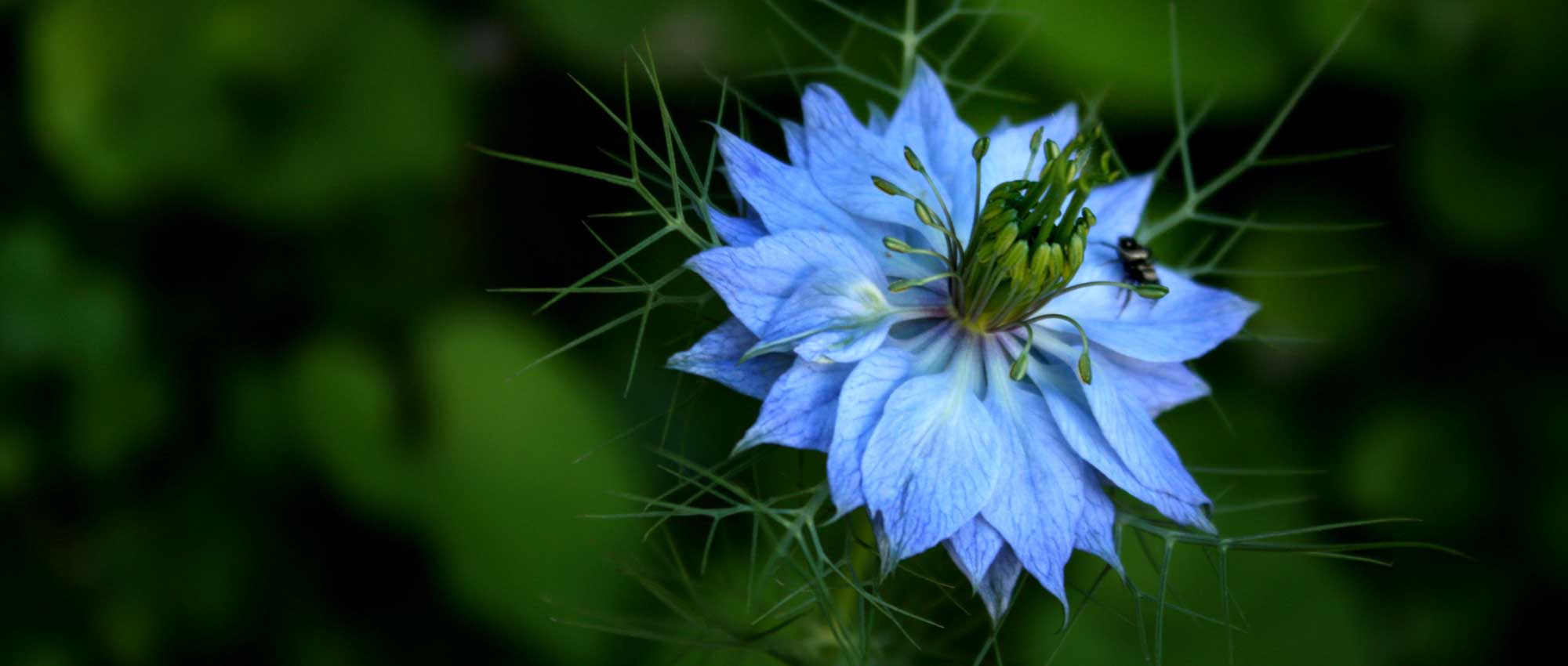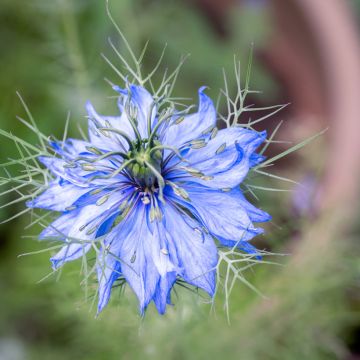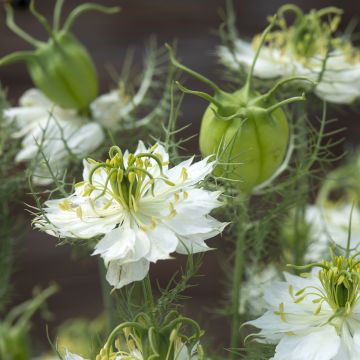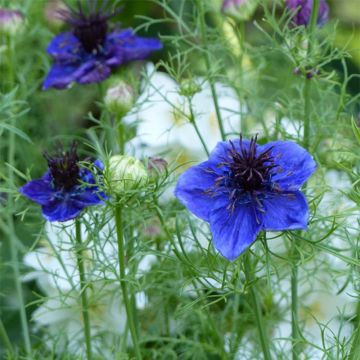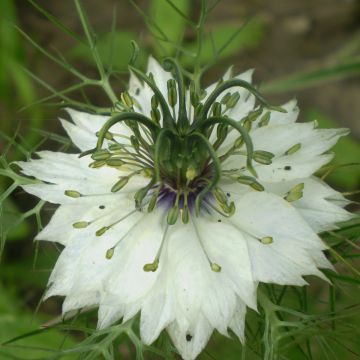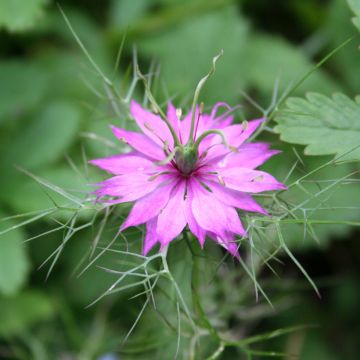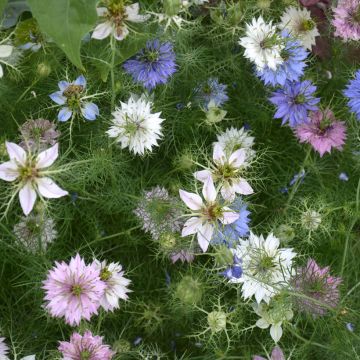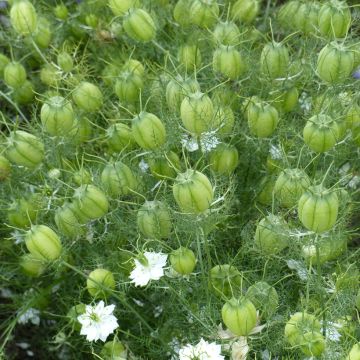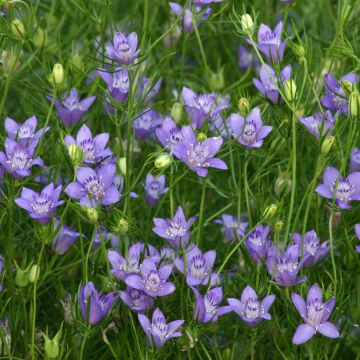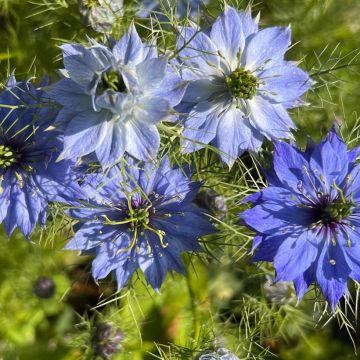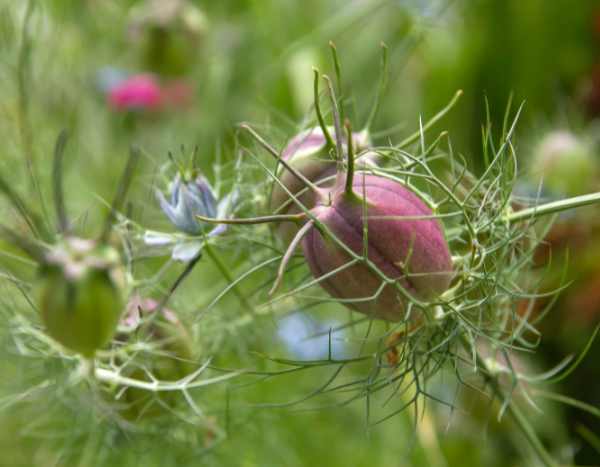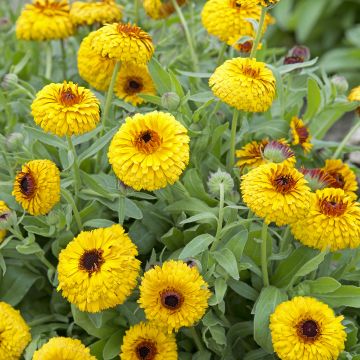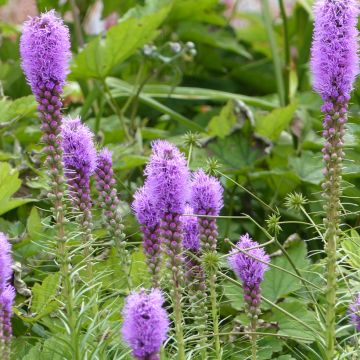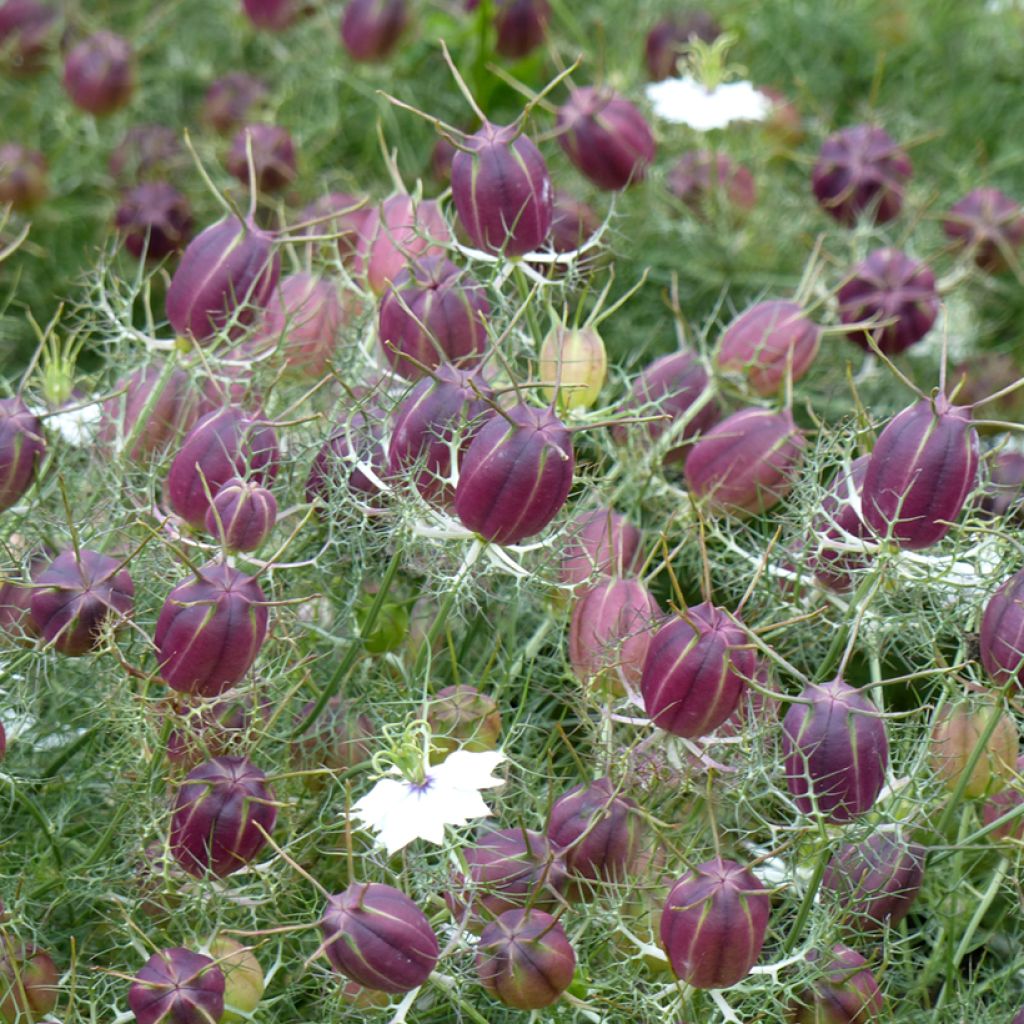

Nigella damascena White with red capsule - Love-in-a-mist Seeds
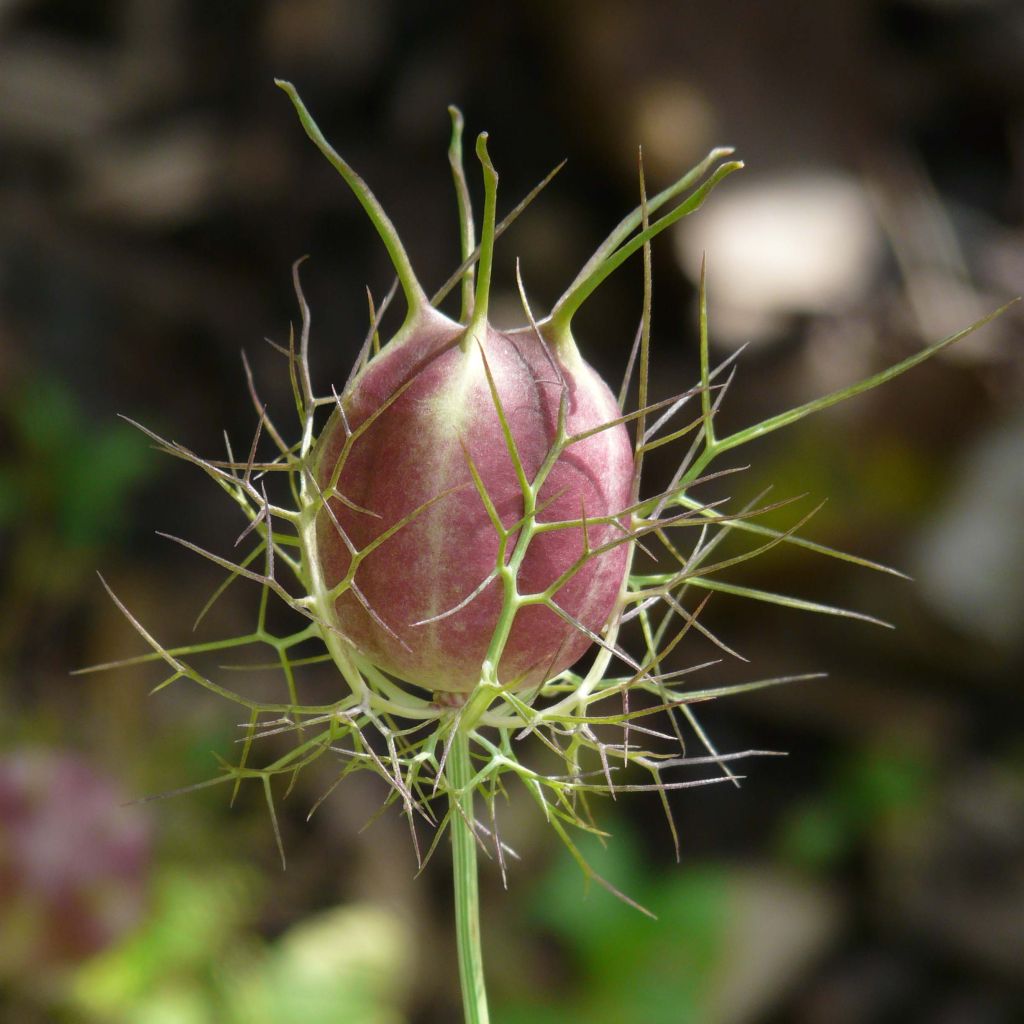

Nigella damascena White with red capsule - Love-in-a-mist Seeds
Nigella damascena White with red capsule - Love-in-a-mist Seeds
Nigella damascena Blanche à capsule Rouge
Love-in-a-Mist
Seeds raised without any issue. We eagerly await what comes next.
Martine , 20/06/2021
Special offer!
Receive a €20 voucher for any order over €90 (excluding delivery costs, credit notes, and plastic-free options)!
1- Add your favorite plants to your cart.
2- Once you have reached €90, confirm your order (you can even choose the delivery date!).
3- As soon as your order is shipped, you will receive an email containing your voucher code, valid for 3 months (90 days).
Your voucher is unique and can only be used once, for any order with a minimum value of €20, excluding delivery costs.
Can be combined with other current offers, non-divisible and non-refundable.
Home or relay delivery (depending on size and destination)
Schedule delivery date,
and select date in basket
This plant carries a 6 months recovery warranty
More information
We guarantee the quality of our plants for a full growing cycle, and will replace at our expense any plant that fails to recover under normal climatic and planting conditions.
Would this plant suit my garden?
Set up your Plantfit profile →
Description
La Love-in-a-mist 'White with red capsule' is an astonishing variety of Nigella damascena, whose remarkably fine white flowers transform into original fruits with a curious red tinge: round, papery capsules embellished with very fine, light-coloured 'hair' that remain decorative for a long time and that provide finer texture for all floral arrangements, both in the garden and in bouquets. You can sow this variety in spring or autumn in milder climates, staggering the sowing with 15-day intervals in order to prolong the flowering period. Foliage, flowers, fruit, everything is decorative in this unpretentious easy-to-grow annual!
Nigella damascena is an annual plant of the buttercup family (Renonculaceae) native to the Near East. In the wild, it grows in uncultivated, rocky areas, roadsides, and in the most difficult of soils. It is an annual plant whose life span does not exceed a few months, but which spontaneously and generously self-seeds. Very hardy and fast-growing, this plant spends the winter as a seedling and in spring forms a beautiful clump of feathery foliage, similar to fennel's leaves, and grows up to 50 cm high and about 30 cm wide. The 'white with red capsule' variety is characterized by the red colouring of its fruit. Flowering takes place from May to August, depending on when the seeds were sown. Its beautiful flowers display tapered petals surrounded by a lace collar and are nestled in the foliage. They are about 3 cm in diameter and develop into round, dark coppery red capsules that become silky when mature and contain a large quantity of small black seeds. These seeds germinate very easily in light soil.
Being one of the plants commonly cultivated in monastic gardens, the Damascus nigella, so aptly named by the English 'Love-in-a-mist', is one of the easiest plants to grow in well-drained soils. It is charming and perfect everywhere and goes well with all the other plants: in natural gardens, rock gardens, perennial beds, where it contrasts beautifully with coarse textured plants. It can also be combined with shrub roses, old roses, bushes or botanical roses. Love-in-a-mist colonizes open spaces in record time and can quickly create a colourful, rural setting with Lady phacelia, Honeywort, sainfoins, Californian poppies, perennial flax, rosemary, wild chicory or everlasting sweet pea...
Flowering
Foliage
Plant habit
Botanical data
Nigella
damascena
Blanche à capsule Rouge
Ranunculaceae
Love-in-a-Mist
Cultivar or hybrid
Other Nigella -Love-in-a-mist seeds
View all →Planting and care
Sowing Love-in-a-mist is child's play. You can either sow in spring or at the end of summer since the seedlings are hardy and overwinter undamaged. Sow the seeds outside, directly in the ground. Prepare the soil well in order to loosen it before sowing. Sow in rows 6 mm deep and 30 cm apart. The young plants do not like to be disturbed at all. You can make beautiful flowering pots for spring by sowing the seeds in an unheated greenhouse or veranda in late summer and autumn. Thin out the seedlings to a 30 cm spacing. Nigella likes sunshine and tolerates drought well because it adapts its life cycle to the weather conditions, flowering early in regions with dry summers and all summer long in cooler climates. These plants self-seed freely in the garden but these seedlings are not always clones of the parents and can differ in appearance.
Sowing period
Intended location
Planting & care advice
-
, onOrder confirmed
Reply from on Promesse de fleurs
Similar products
Haven't found what you were looking for?
Hardiness is the lowest winter temperature a plant can endure without suffering serious damage or even dying. However, hardiness is affected by location (a sheltered area, such as a patio), protection (winter cover) and soil type (hardiness is improved by well-drained soil).

Photo Sharing Terms & Conditions
In order to encourage gardeners to interact and share their experiences, Promesse de fleurs offers various media enabling content to be uploaded onto its Site - in particular via the ‘Photo sharing’ module.
The User agrees to refrain from:
- Posting any content that is illegal, prejudicial, insulting, racist, inciteful to hatred, revisionist, contrary to public decency, that infringes on privacy or on the privacy rights of third parties, in particular the publicity rights of persons and goods, intellectual property rights, or the right to privacy.
- Submitting content on behalf of a third party;
- Impersonate the identity of a third party and/or publish any personal information about a third party;
In general, the User undertakes to refrain from any unethical behaviour.
All Content (in particular text, comments, files, images, photos, videos, creative works, etc.), which may be subject to property or intellectual property rights, image or other private rights, shall remain the property of the User, subject to the limited rights granted by the terms of the licence granted by Promesse de fleurs as stated below. Users are at liberty to publish or not to publish such Content on the Site, notably via the ‘Photo Sharing’ facility, and accept that this Content shall be made public and freely accessible, notably on the Internet.
Users further acknowledge, undertake to have ,and guarantee that they hold all necessary rights and permissions to publish such material on the Site, in particular with regard to the legislation in force pertaining to any privacy, property, intellectual property, image, or contractual rights, or rights of any other nature. By publishing such Content on the Site, Users acknowledge accepting full liability as publishers of the Content within the meaning of the law, and grant Promesse de fleurs, free of charge, an inclusive, worldwide licence for the said Content for the entire duration of its publication, including all reproduction, representation, up/downloading, displaying, performing, transmission, and storage rights.
Users also grant permission for their name to be linked to the Content and accept that this link may not always be made available.
By engaging in posting material, Users consent to their Content becoming automatically accessible on the Internet, in particular on other sites and/or blogs and/or web pages of the Promesse de fleurs site, including in particular social pages and the Promesse de fleurs catalogue.
Users may secure the removal of entrusted content free of charge by issuing a simple request via our contact form.
The flowering period indicated on our website applies to countries and regions located in USDA zone 8 (France, the United Kingdom, Ireland, the Netherlands, etc.)
It will vary according to where you live:
- In zones 9 to 10 (Italy, Spain, Greece, etc.), flowering will occur about 2 to 4 weeks earlier.
- In zones 6 to 7 (Germany, Poland, Slovenia, and lower mountainous regions), flowering will be delayed by 2 to 3 weeks.
- In zone 5 (Central Europe, Scandinavia), blooming will be delayed by 3 to 5 weeks.
In temperate climates, pruning of spring-flowering shrubs (forsythia, spireas, etc.) should be done just after flowering.
Pruning of summer-flowering shrubs (Indian Lilac, Perovskia, etc.) can be done in winter or spring.
In cold regions as well as with frost-sensitive plants, avoid pruning too early when severe frosts may still occur.
The planting period indicated on our website applies to countries and regions located in USDA zone 8 (France, United Kingdom, Ireland, Netherlands).
It will vary according to where you live:
- In Mediterranean zones (Marseille, Madrid, Milan, etc.), autumn and winter are the best planting periods.
- In continental zones (Strasbourg, Munich, Vienna, etc.), delay planting by 2 to 3 weeks in spring and bring it forward by 2 to 4 weeks in autumn.
- In mountainous regions (the Alps, Pyrenees, Carpathians, etc.), it is best to plant in late spring (May-June) or late summer (August-September).
The harvesting period indicated on our website applies to countries and regions in USDA zone 8 (France, England, Ireland, the Netherlands).
In colder areas (Scandinavia, Poland, Austria...) fruit and vegetable harvests are likely to be delayed by 3-4 weeks.
In warmer areas (Italy, Spain, Greece, etc.), harvesting will probably take place earlier, depending on weather conditions.
The sowing periods indicated on our website apply to countries and regions within USDA Zone 8 (France, UK, Ireland, Netherlands).
In colder areas (Scandinavia, Poland, Austria...), delay any outdoor sowing by 3-4 weeks, or sow under glass.
In warmer climes (Italy, Spain, Greece, etc.), bring outdoor sowing forward by a few weeks.






























